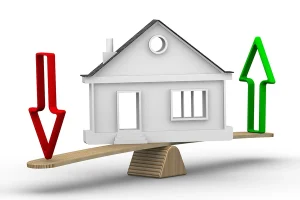- Selling
- Buying
- Landlords
- B&R Landlord hub
- Management services
- Vacant management
- Landlord reviews
- Rental investment
- Furnishing and refurbishment
- Renters’ Rights Act
- Yield calculator
- Free online valuation
- Stamp duty calculator
- ROI calculator
- Landlord resources
- EPC guide
- Video hub
- Area guides
- Fees for landlord
- Lettings Laws
- Why choose Benham and Reeves
- Renting
- New homes
- House prices
- International services
International offices
China, Hong Kong SAR, India, Indonesia, Malaysia, Middle East, Qatar, Singapore, South Africa, Thailand and Turkey
Learn more - Contact
- News
- Contact
- About us
- My B&R
Home Press releasesProperty marketUK housing affordability set to improve for a fourth consecutive year as income to house price ratio forecast to fall to 8.2
UK housing affordability set to improve for a fourth consecutive year as income to house price ratio forecast to fall to 8.2
- Property market
- 21.11.25
- Benham & Reeves
 The latest research from London estate agent Benham and Reeves has found that the UK’s house price to income affordability ratio is forecast to fall to 8.2 in 2026, marking the fourth consecutive year of improving affordability for homebuyers, following a peak of 9.5 in 2022, when house price growth significantly outpaced earnings.
The latest research from London estate agent Benham and Reeves has found that the UK’s house price to income affordability ratio is forecast to fall to 8.2 in 2026, marking the fourth consecutive year of improving affordability for homebuyers, following a peak of 9.5 in 2022, when house price growth significantly outpaced earnings.
Benham and Reeves analysed the latest figures on average UK house prices and average gross earnings, alongside 2026 forecasts, to understand how improving wage growth is helping to restore balance to the market.
The research shows that so far this year, the average UK home sits at 8.3 times median gross earnings, down from 8.4 in 2024 and continuing the downward trend seen since 2022. Prior to this, the affordability ratio had fallen from 9.5 in 2022 to 8.9 in 2023, highlighting a clear multi-year improvement.
This shift has been driven by the fact that wage growth has exceeded house price inflation every year since 2023.
In 2022, house prices surged by 11.2 percent while average earnings rose by just 6.9 percent, placing considerable strain on affordability.
Since then, the picture has reversed. In 2023, average earnings climbed by 6.3 percent while house prices dipped by one percent. In 2024, earnings rose by 7.1 percent compared to a marginal 0.9 percent rise in property values.
This year, wage growth of 4.1 percent is again outpacing the 3 percent rise in average house prices, and this more balanced pattern is expected to continue into 2026, with earnings forecast to rise by 4.7 percent against a 2.9 percent increase in house prices.
This sustained trend of stronger wage growth is helping to gradually restore affordability for buyers who have faced significant pressures in recent years, particularly following the sharp post-pandemic surge in property values.
Director of Benham and Reeves, Marc von Grundherr, commented:
“After years of buyers being squeezed by rapid house price inflation, the tide has finally turned and, with wages now rising faster than property values for several years in a row, affordability is slowly but steadily improving.
It won’t transform the market overnight, but it does mark a meaningful shift after an extended period of financial strain for anyone hoping to get onto or move up the ladder.
As interest rates stabilise and economic confidence improves, this more sustainable balance between earnings and house prices should support a healthier, more stable level of market activity in the years ahead.”
| Year | Average gross salary (median) | Change % – average gross salary | Average house price | Change % – average house price |
|---|---|---|---|---|
| 2021 | £25,990 | – | £238,403 | – |
| 2022 | £27,774 | 6.9% | £265,124 | 11.2% |
| 2023 | £29,511 | 6.3% | £262,602 | -1.0% |
| 2024 | £31,600 | 7.1% | £265,085 | 0.9% |
| 2025 | £32,890 | 4.1% | £272,995 | 3.0% |
| 2026 est fc | £34,436 | 4.7% | £280,830 | 2.9% |
| Year | Average gross salary (median) | Average house price | Est affordability ratio |
|---|---|---|---|
| 2021 | £25,990 | £238,403 | 9.2 |
| 2022 | £27,774 | £265,124 | 9.5 |
| 2023 | £29,511 | £262,602 | 8.9 |
| 2024 | £31,600 | £265,085 | 8.4 |
| 2025 | £32,890 | £272,995 | 8.3 |
| 2026 est fc | £34,436 | £280,830 | 8.2 |
Average house price data sourced from Gov – UK House Price Index (Aug 2025 – latest available)
Average earnings sourced from the Office for National Statistics – Average weekly earnings in Great Britain: October 2025
Average house price to income affordability ratio based on the average house price in each year divided by the average earnings.
Average earnings sourced from the Office for National Statistics – Average weekly earnings in Great Britain: October 2025
Average house price to income affordability ratio based on the average house price in each year divided by the average earnings.
About the Author
Established in 1958, Benham and Reeves is one of London’s oldest, independently owned property lettings and sales agents. With specialism in residential sales, corporate lettings and property management in prime areas of London, the company operates from 21 prominently located branches and 13 international offices.View all posts by Benham & Reeves















